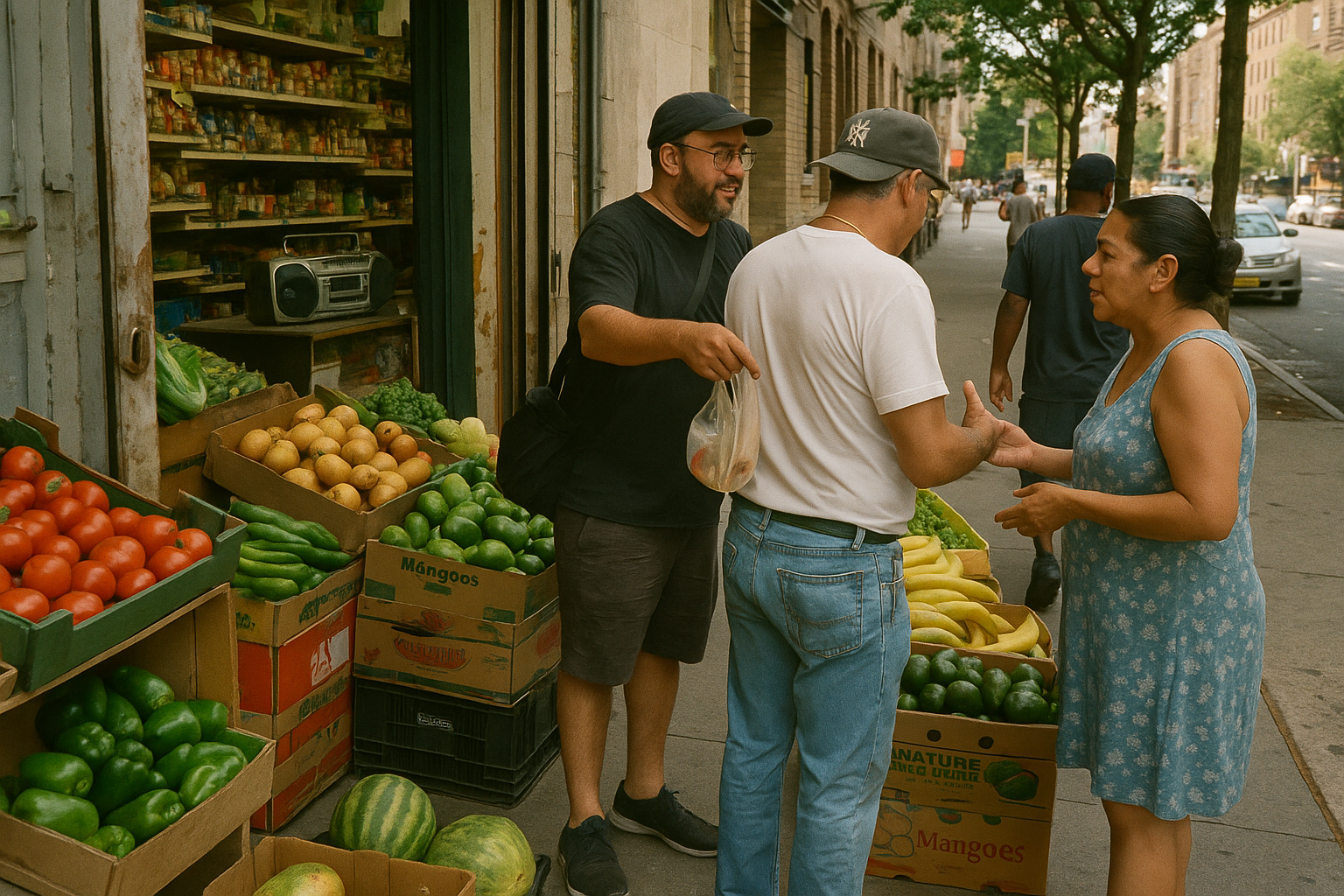Exploring the Cultural Impact of 'In the Heights'
By Broadwaytrax Content Studio · October 21, 2025
Updated October 21, 2025
A summer block in Washington Heights hums with rhythm. Neighbors trade English and Spanish. Someone turns up the radio. A bodega door rings. In the Heights invites us into that sound and care, asking: What makes a home, and who gets to belong?
This spotlight explores how the musical changes the usual story about immigrant life. Instead of just focusing on struggle, it highlights joy, hustle, and the bonds that bring a neighborhood together. This message resonates powerfully during Hispanic Heritage Month, as many schools and theaters program work that reflects identity today (Pew Research Center).
Bring "Exploring the Cultural Impact of 'In the Heights'" to life with custom tracks
Get the exact arrangement you need—either customize an existing accompaniment or commission a bespoke build from our team.
Don't see this show in our library yet? We'll build it for you.In just three hot days, we meet Usnavi, who runs a bodega. Nina returns from college with doubts, and Vanessa dreams of her own place. Benny works at the dispatch. Abuela Claudia holds the block together. A blackout occurs, and a winning lottery ticket could change everything. Each character must decide what home means and whether to stay, go, or rebuild (PBS).
The creative team shaped this story carefully. Music and lyrics are by Lin-Manuel Miranda, and the book is by Quiara Alegría Hudes. Thomas Kail directed the original Broadway production, while Andy Blankenbuehler created the dance that brings the streets to life. Orchestrations are by Alex Lacamoire and Bill Sherman (Tony Awards). The show first appeared Off-Broadway at 37 Arts in 2007, locking in its voice and team before moving uptown (Lortel Archives).
On Broadway, In the Heights ran at the Richard Rodgers Theatre for over a thousand performances. The production opened in 2008 and closed in 2011 after 1,184 performances, amassing a dedicated audience (IBDB).
You can hear the show's energy through its songs. The opening number, "In the Heights," maps the block and sets the tone. "Breathe" reflects Nina's fears and hopes as she faces her family's dreams and her own needs. "It Won't Be Long Now" spotlights Vanessa's determination. "96,000" turns a lottery daydream into a community cipher. "Paciencia y Fe" tells Abuela Claudia's migration story with strength. "Alabanza" captures grief and love. A rooftop wave of flags powers "Carnaval del Barrio," and a gentle "Finale" connects home to people, not just a place.
What makes this musical feel new? It focuses on joy and agency in a pan-Latin community. Characters help each other, share food, and exchange advice. They switch between English and Spanish onstage. The score mixes hip-hop, salsa, merengue, and musical theatre style, honoring everyday speech (PBS). This blend not only entertains but also broadens who can lead a story on Broadway (Tony Awards).
Washington Heights isn't just a setting; it feels like a character. The script names real streets and shops, grounding the story in an actual neighborhood. Data from New York City Planning shows a large Latin population tied to the Dominican diaspora, making the setting authentic (NYC Planning).

The story also examines change. Rising rents threaten small businesses. Some neighbors plan to leave while others fight to stay. The writing captures mixed feelings about mobility and pride while revealing the human impact of big policy debates (PBS).
The musical received significant acclaim. It earned 13 Tony nominations and won four, including Best Musical and Best Original Score. The Original Broadway Cast Recording won a Grammy for Best Musical Theater Album, highlighting the powerful score (Tony Awards) and (Recording Academy).
The impact extended beyond New York. The London staging at King’s Cross Theatre in 2015–2016 garnered multiple Olivier Awards, including Outstanding Achievement in Music (Olivier Awards). Critics praised the energetic blend of salsa and rap and the sense of community created in the round (The Guardian).
The 2021 film adaptation also sparked important discussions about colorism and Afro-Latin visibility. Lin-Manuel Miranda publicly addressed the lack of Afro-Latino representation in principal roles, emphasizing the need for improvement (NPR). This highlights the need for cultural specificity in casting and community engagement when staging the show.
For those looking to stage or teach the piece, here are simple steps to follow. Invite local organizations for discussions and resource sharing. Treat Spanish in the script as a strength. Provide bilingual materials if necessary. Allow time for dialect coaching and learning the dances.
Rehearse In the Heights with performance-ready tracks.
Start a ProjectFor performers, the music is a rich learning resource. Rappers can work on diction with "96,000," while belters find their voice in "Breathe." Ensembles can practice switching between speech and song in "Blackout." The cast album remains a valuable tool for classroom use (Recording Academy).
Why is In the Heights still important? It tells a story of a neighborhood that feels like a warm family gathering. It shows immigrant life as bright and full of warmth while addressing the pressures of change. Right now, as nearly one in seven U.S. residents is foreign-born, the themes of the show are crucial (Pew Research Center). The musical reminds us that home is built in the connections we share, the language we speak, and the songs we pass on.
In the Heights turns immigrant life from a tale of struggle into a song of joy, pride, and community care.